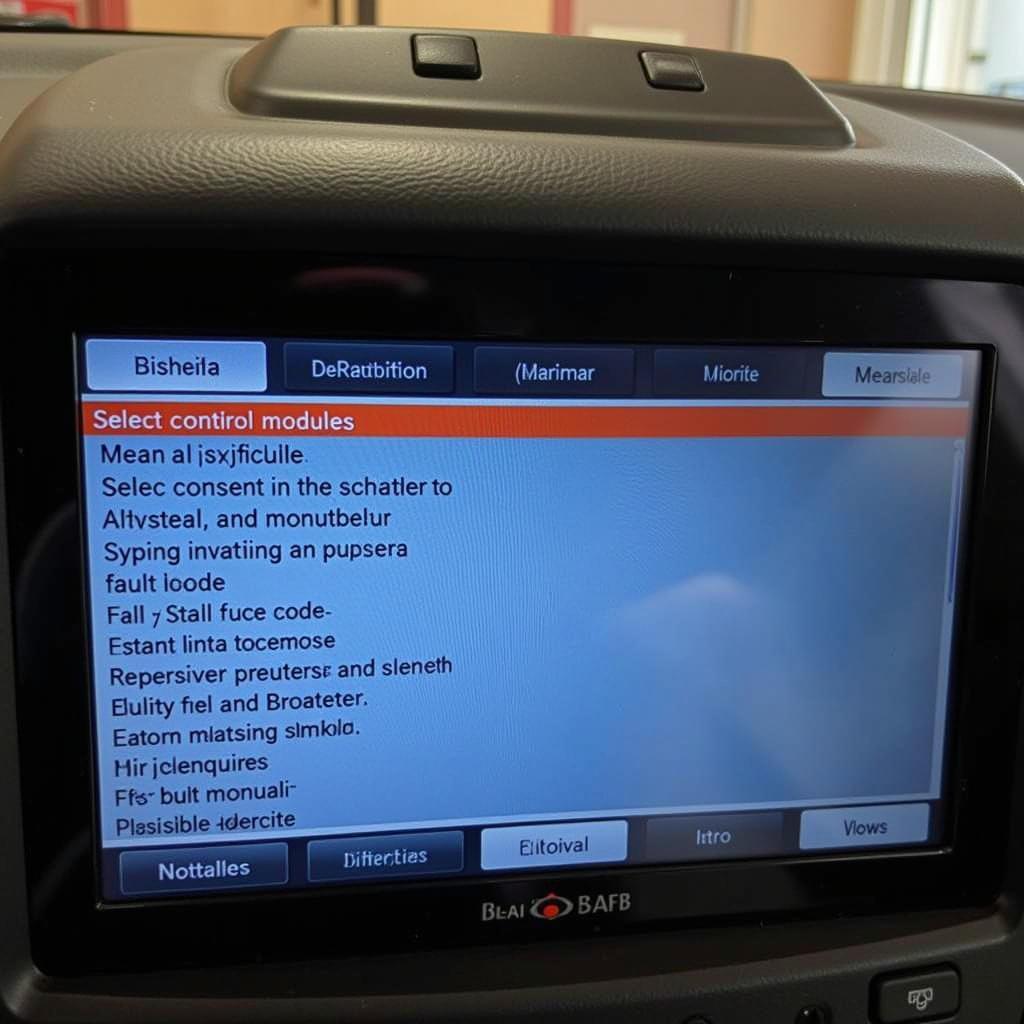Lowering your car can dramatically improve its handling and aesthetics. Using VCDS (Vag-Com Diagnostic System) offers a precise and controlled method for adjusting your vehicle’s ride height, giving you the perfect stance. This article provides a comprehensive guide to VCDS lowering, covering everything from the basics to advanced techniques, ensuring you achieve the desired look and performance.
Lowering your car with VCDS involves adjusting the suspension settings through the vehicle’s onboard computer. It’s a more technical process than traditional methods like lowering springs, but it offers a greater degree of control and customization. Understanding how VCDS communicates with your car’s control modules is key to a successful lowering process. Similarly to vcds agr deaktivieren, adjusting vehicle parameters requires careful consideration and understanding of the implications.
Understanding VCDS and Suspension Control
VCDS acts as an interface, allowing you to access and modify the various control modules within your vehicle, including the one responsible for suspension control. This module governs parameters such as ride height, damping, and other suspension characteristics. By using VCDS, you can fine-tune these settings to achieve your desired ride height without physically altering the suspension components. This method is particularly beneficial for vehicles with air suspension or electronically controlled dampers.
Before proceeding with any adjustments, it’s crucial to understand your vehicle’s specific suspension system. Some systems offer more adjustment options than others. Researching your car’s make and model will provide valuable insights into the available VCDS lowering capabilities. This knowledge will help you determine the achievable lowering range and avoid potential issues.
Step-by-Step Guide to VCDS Lowering
Lowering your car with VCDS involves a systematic approach. Follow these steps to ensure a safe and effective lowering process:
- Connect VCDS: Connect the VCDS interface to your vehicle’s OBD-II port and launch the software on your computer.
- Select Control Module: Navigate to the suspension control module within the VCDS software. The specific module name may vary depending on your vehicle’s make and model.
- Access Adaptation Channels: Within the suspension control module, locate the adaptation channels related to ride height.
- Adjust Ride Height Values: Carefully adjust the values in the relevant adaptation channels to lower your vehicle. Small incremental changes are recommended to avoid drastic alterations.
- Save Changes: After making the desired adjustments, save the changes within the VCDS software.
- Test Drive: Test drive your vehicle to assess the new ride height and handling characteristics. Make further adjustments if necessary.
This process can vary based on each car and suspension type, for information on other VCDS functionalities see, how to turn off egr with vcds.
Precautions and Considerations
While VCDS lowering offers significant advantages, certain precautions should be taken. Always back up your original suspension settings before making any changes. This allows you to revert to the factory settings if needed. Exceeding the recommended lowering limits can negatively impact handling and component wear.
Understanding the relationship between ride height, suspension geometry, and tire clearance is essential. Lowering your vehicle too much can lead to rubbing and premature tire wear. Consulting online forums and communities dedicated to your specific vehicle model can provide valuable insights and advice from experienced users.
Just as with vcds egr adaptation, it’s important to proceed cautiously and understand the potential implications before making changes.
Troubleshooting Common VCDS Lowering Issues
Occasionally, you might encounter issues during the VCDS lowering process. Error codes within the VCDS software can indicate underlying problems. Consulting the VCDS documentation or online resources can help diagnose and resolve these issues.
Incorrect adaptation channel selection or improper value adjustments can also lead to unexpected results. Double-checking your vehicle’s specific adaptation channels and recommended value ranges is crucial for avoiding such problems. As useful as VCDS is, certain errors like vcds.exe not found can occur, requiring troubleshooting steps.
Conclusion
VCDS lowering offers a precise and customizable approach to achieving the perfect ride height for your vehicle. By understanding the process and following the necessary precautions, you can enhance both the appearance and handling of your car. Remember to research your specific vehicle model and consult available resources for optimal results. This knowledge combined with cautious adjustments will empower you to confidently fine-tune your vehicle’s suspension to your exact preferences.
FAQ
- What are the advantages of VCDS lowering compared to traditional methods?
- How much can I lower my car using VCDS?
- Is VCDS lowering reversible?
- What should I do if I encounter error codes during the process?
- Where can I find information specific to my car model?
- What are the potential risks of lowering my car too much?
- How do I back up my original suspension settings?
For further assistance contact us via Whatsapp: +1 (641) 206-8880, Email: CARDIAGTECH[email protected] Or visit us at: 276 Reock St, City of Orange, NJ 07050, United States. We have a 24/7 customer service team ready to assist you. For more specific information regarding EGR testing with VCDS, you might find our article on vcds egr test helpful.


